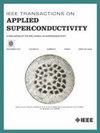基于机器学习的代理模型增强未来托卡马克磁体设计
IF 1.8
3区 物理与天体物理
Q3 ENGINEERING, ELECTRICAL & ELECTRONIC
引用次数: 0
摘要
本文介绍了一种基于机器学习(ML)技术的代理建模方法,用于增强欧洲演示聚变电站(EU-DEMO)的磁体设计。尽管努力将反应堆的尺寸减到最小,但其尺寸仍然相当大,因此需要先进的工具来进行有效的设计探索。为了支持设计过程,我们开发了不同细节级别的预尺寸代码,如 "MAgnet Design Explorer Algorithm (MADE)"。MADE 系统地扫描所有可能的配置,识别满足电磁机械约束条件的配置,并提供由点云组成的数据集,每个点云对应一个可行的磁体设计和相关布局。这项工作以 MADE 生成的数据为基础,训练人工神经网络,创建一个能够直接识别最佳配置的代理模型,以识别云中的最佳解决方案。所提出的 ML 方法非常灵活,不仅可以解决正向问题(根据给定输入预测输出),还可以解决反向问题(推断实现所需输出特性所需的输入参数)或自由混合输入和输出参数。这种灵活性增强了该方法的适应性,使其能够更有针对性地探索设计空间。该模型已应用于中央螺线管模块的设计,但也可直接扩展到其他磁体系统,如环形和极性磁场线圈。此外,代用模型大大加快了预尺寸设计阶段的速度,减少了需要研究的配置范围,促进了工程和物理团队之间的快速迭代。通过提供快速准确的预测,ML 方法简化了设计流程,使其成为为 EU-DEMO 等托卡马克反应堆设计超导磁体的重要工具。本文章由计算机程序翻译,如有差异,请以英文原文为准。
Machine Learning-Based Surrogate Modeling for Enhancing the Magnet Design of Future Tokamaks
This paper presents a surrogate modeling approach based on Machine Learning (ML) techniques to enhance the magnet design of the European DEMOnstration Fusion Power Plant (EU-DEMO). Despite efforts to minimize the reactor size, its dimensions remain considerable, necessitating advanced tools for efficient design exploration. To support the design process, pre-sizing codes such as the MAgnet Design Explorer Algorithm (MADE) were developed at different detail levels. MADE systematically scans all possible configurations, identifying those that satisfy electro-magneto-mechanical constraints and providing a dataset consisting of a cloud of points, each corresponding to a feasible magnet design and related layout. This work builds upon MADE-generated data to train Artificial Neural Networks creating a surrogate model capable of directly identifying optimal configurations for identifying the optimal solution within the cloud. The flexibility of the proposed ML approach allows not only for solving the forward problem (predicting outputs from given inputs) but also for addressing the inverse problem (deducing the input parameters needed to achieve desired output characteristics) or freely mixing input and output parameters. This flexibility enhances the adaptability of the method, enabling a more targeted exploration of the design space. The model has been applied to the design of the central solenoid modules, but can be extended straightforwardly to other magnet systems, such as toroidal and poloidal field coils. Furthermore, the surrogate model significantly accelerates the pre-dimensioning phase, reducing the range of configurations to be investigated and facilitating rapid iterations between engineering and physics teams. By providing fast and accurate predictions, the ML approach streamlines the design process, making it a valuable tool for the design of superconducting magnets for tokamak reactors like EU-DEMO.
求助全文
通过发布文献求助,成功后即可免费获取论文全文。
去求助
来源期刊

IEEE Transactions on Applied Superconductivity
工程技术-工程:电子与电气
CiteScore
3.50
自引率
33.30%
发文量
650
审稿时长
2.3 months
期刊介绍:
IEEE Transactions on Applied Superconductivity (TAS) contains articles on the applications of superconductivity and other relevant technology. Electronic applications include analog and digital circuits employing thin films and active devices such as Josephson junctions. Large scale applications include magnets for power applications such as motors and generators, for magnetic resonance, for accelerators, and cable applications such as power transmission.
 求助内容:
求助内容: 应助结果提醒方式:
应助结果提醒方式:


